Your cart is currently empty!
Blog
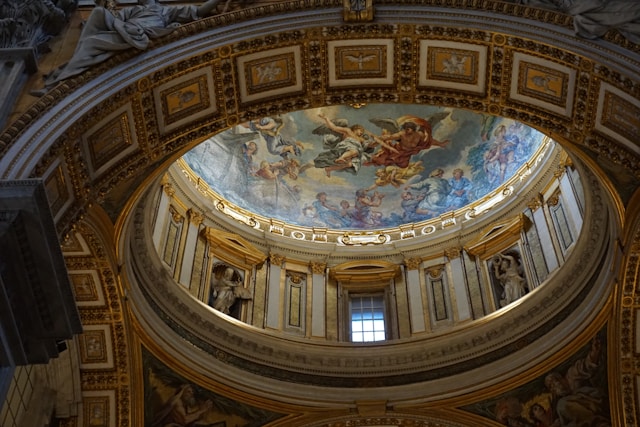
Discover the Rich History and Impact of the African Methodist Episcopal Church
Origins and Early Years
The African Methodist Episcopal (AME) Church, founded in 1816, is a historically Black denomination that has played a pivotal role in American history. Richard Allen, a formerly enslaved Methodist minister, led a group of African Americans to establish the church in Philadelphia, Pennsylvania, after being subjected to discrimination and segregated seating in white churches.
The AME Church was founded on principles of self-governance, equality, and the empowerment of African Americans. It provided not only religious services but also social and educational opportunities for its members.
Growth and Expansion
The AME Church expanded rapidly throughout the United States during the 19th century. By 1848, it had grown to include 100,000 members and had established churches in both the North and the South.
The church played a significant role in the abolitionist movement and the fight for civil rights. Many AME ministers were outspoken proponents of freedom and equality, and the church’s membership included notable abolitionists such as Frederick Douglass and Harriet Tubman.
Social and Educational Contributions
Beyond its religious mission, the AME Church made significant contributions to the social and educational development of African Americans. It established schools, orphanages, and hospitals, providing vital services to communities that were often denied access to such institutions.
The AME Church also operated publishing houses that produced books, newspapers, and other materials geared towards educating and empowering African Americans.
Prominent Leaders
Richard Allen
Richard Allen, the founder of the AME Church, was a former slave who became an influential religious leader and abolitionist. He served as the first bishop of the AME Church and played a key role in establishing the denomination’s doctrine and governance.
William Paul Quinn
William Paul Quinn was a prominent AME minister and abolitionist who served as bishop from 1864 to 1872. He was a leading advocate for civil rights and helped to found the Colored National Convention.
Daniel Payne
Daniel Payne was an AME minister and theologian who served as bishop from 1852 to 1864. He was a prominent advocate for education and founded Wilberforce University in Ohio, one of the first colleges established for African Americans.
Current Status and Impact
- Today, the AME Church has over 2.5 million members and more than 10,000 churches around the world.
- It is a member of the World Methodist Council and the National Council of Churches.
- The AME Church continues to play an important role in the African American community, providing spiritual guidance, social services, and advocacy for justice.
Key Principles
The African Methodist Episcopal Church is based on the following fundamental principles:
- The autonomy and self-governance of the Black church.
- The equality of all persons, regardless of race, gender, or socioeconomic status.
- The empowerment of African Americans through education, economic development, and social activism.
Challenges and Controversies
Like any institution, the AME Church has faced challenges and controversies throughout its history.
Internal Divisions
The AME Church has experienced occasional internal divisions over theological and governance issues. These divisions have sometimes led to the formation of separate denominations.
Racial Discrimination
The AME Church has faced discrimination and prejudice from both white and Black society throughout its history. However, it has remained resilient and has continued to advocate for racial equality.
Conclusion
The African Methodist Episcopal Church is a testament to the resilience and determination of the African American community. It has played a vital role in the fight for civil rights, the promotion of education, and the empowerment of African Americans.
Today, the AME Church continues to be a vibrant and influential force in the Christian world. It is a beacon of hope and a source of strength for its members and the communities it serves.
Additional Resources
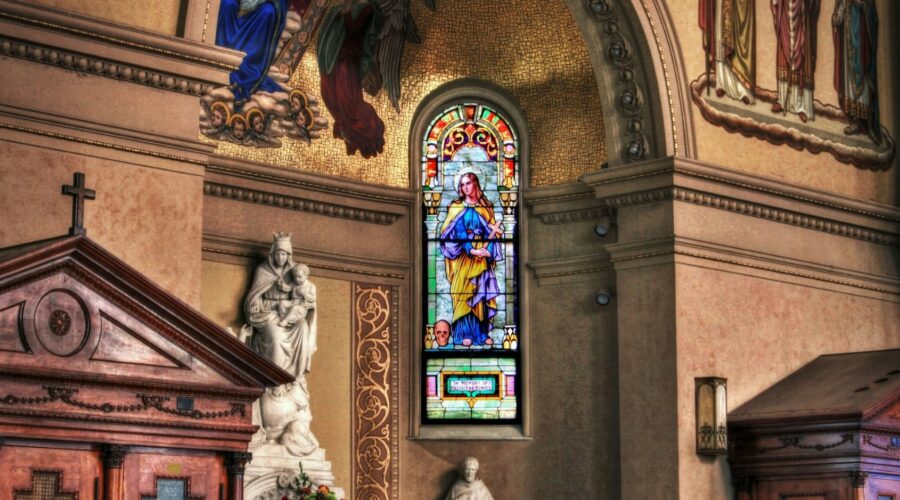
Unveiling the Enchanting History, Architecture, and Significance of St. Elizabeth Church
Introduction
Nestled amidst the bustling streets of a vibrant city, St. Elizabeth Church stands as a testament to architectural brilliance and religious devotion. The church’s intricate design, captivating history, and enduring legacy have made it a beloved landmark, attracting visitors from far and wide.
History: A Tapestry of Faith and Community
The roots of St. Elizabeth Church can be traced back to the early 19th century when a group of devout Catholics sought to establish a place of worship in the city. With the support of the local bishop, they acquired land and commissioned the construction of a small chapel.
As the Catholic community grew, so too did the need for a larger church. In 1895, construction began on the present-day edifice, designed by renowned architect Arthur Dillon. The church was completed in 1901 and consecrated by the bishop.
Throughout its history, St. Elizabeth Church has played a vital role in the life of the community. It has served as a place of worship, a center for education, a haven for the needy, and a beacon of hope for countless individuals.
Architecture: A Symphony of Gothic Grandeur
St. Elizabeth Church is a masterpiece of Gothic Revival architecture, characterized by its soaring spires, elaborate ornamentation, and stained-glass windows.
Exterior
- Steeple: Reaching skyward, the church’s steeple dominates the skyline. Its octagonal shape and intricate detailing make it a striking architectural element.
- Spires: Four slender spires adorn the corners of the steeple, adding a sense of height and majesty.
- Window Tracery: The church’s windows feature elaborate tracery, creating intricate patterns of light that illuminate the interior.
- Buttresses: Massive buttresses support the walls of the church, providing structural stability and adding to its imposing presence.
Interior
- Nave: The nave is the central aisle of the church, flanked by rows of pews. Its high vaulted ceiling creates a sense of spaciousness and awe.
- Transept: The transept is the cross-section of the church, creating a cruciform shape. It is often used for special ceremonies and processions.
- Altar: The altar, located at the eastern end of the nave, is the focal point of the church. It is adorned with intricate carvings and a magnificent altarpiece.
- Stained Glass Windows: The church’s stained-glass windows depict scenes from the Bible and depict the lives of saints. Their vibrant colors and detailed craftsmanship create a breathtaking visual spectacle.
Significance: A Haven for Faith and Community
St. Elizabeth Church is not merely an architectural marvel but also a place of profound spiritual significance.
Religious Significance
- Patron Saint: The church is dedicated to Saint Elizabeth of Hungary, a patron saint of the poor and the sick.
- Sacraments: The church offers a wide range of sacraments, including Baptism, Confirmation, Eucharist, and Matrimony.
- Prayer and Meditation: The church is a sanctuary for prayer and meditation, offering a serene and contemplative space for visitors.
Community Involvement
- Social Services: The church operates a food pantry, clothing drive, and offers other social services to those in need.
- Community Events: The church hosts a variety of community events, including festivals, concerts, and lectures.
- Education: The church runs a school and offers a wide range of educational programs for all ages.
Conclusion
St. Elizabeth Church is more than just a building; it is a living testimony to the power of faith, the beauty of architecture, and the importance of community. Its rich history, stunning design, and enduring significance make it a must-visit destination for anyone seeking inspiration, tranquility, or a deeper connection to their spiritual heritage. Whether you are a devout Catholic, an architecture enthusiast, or simply a curious traveler, this architectural gem awaits your discovery, offering a captivating glimpse into the heart of a vibrant faith community.
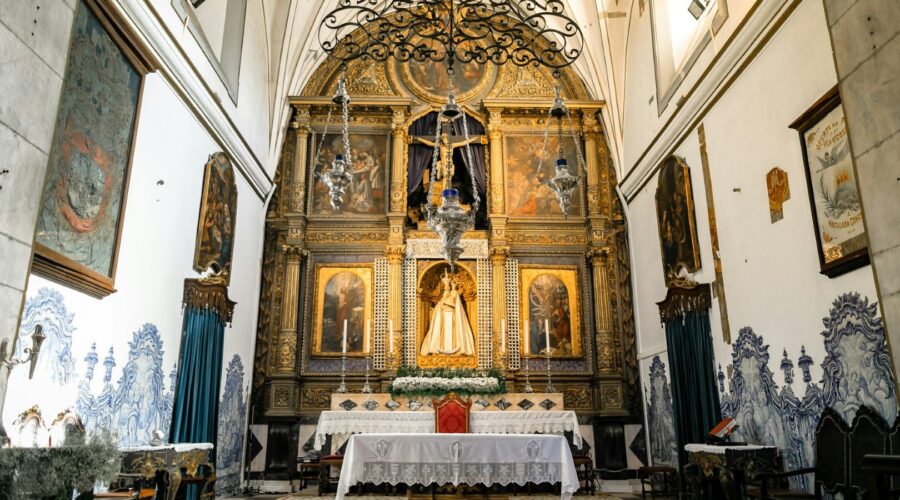
Discover the Captivating History and Significance of Our Lady of Mount Carmel Church
Nestled amidst the rolling hills of Carmel, California, the renowned Our Lady of Mount Carmel Church holds a profound significance that transcends its architectural beauty. This hallowed ground has witnessed centuries of faith, devotion, and spiritual growth, making it a true beacon of hope and inspiration.
A Testament to Architectural Marvelry
The church’s striking edifice, completed in 1928, is a masterpiece of Spanish Renaissance Revival architecture. Its distinctive white facade, adorned with intricate carvings and majestic twin towers, evoke an aura of reverence and tranquility.
Inside, the sanctuary unfolds in a symphony of vaulted ceilings, stained-glass windows, and elaborate frescoes. The altar, a focal point of the church, features a stunning depiction of Our Lady of Mount Carmel, surrounded by a chorus of angels.
A Cradle of Faith and Devotion
The origins of Our Lady of Mount Carmel Church date back to the 18th century, when Spanish missionaries established a mission on the site. Over the years, the mission grew into a vibrant parish, attracting countless pilgrims and devotees.
The Miraculous Appearance of the Virgin Mary
In 1858, the church experienced a transformative event: the miraculous appearance of the Virgin Mary to a young girl named Marie Rose Ferron. This apparition marked a turning point in the parish’s history, solidifying its reputation as a sanctuary of hope and healing.
A Center of Spiritual Nourishment
Beyond its architectural splendor, Our Lady of Mount Carmel Church is a thriving hub of spiritual nourishment. Its vibrant community offers a wide range of programs and services, fostering faith growth and connecting individuals with their spirituality.
Prayer and Worship
The church provides ample opportunities for prayer and worship, with daily Masses, confessions, and Eucharistic adoration. Its serene ambiance and inspiring clergy create a sanctuary where individuals can deepen their relationship with God.
Education and Formation
The parish has a strong commitment to education and formation. It offers a comprehensive religious education program for children and adults, equipping them with a solid grounding in the Catholic faith.
Outreach and Service
Our Lady of Mount Carmel Church extends its mission beyond its walls through various outreach and service initiatives. The parish supports local charities, provides disaster relief, and offers spiritual guidance to those in need.
A Symbol of Hope and Inspiration
Today, Our Lady of Mount Carmel Church stands as a testament to the enduring power of faith and the transformative impact of spiritual growth. Its unique history, architectural beauty, and vibrant community make it a cherished destination for pilgrims, tourists, and locals alike.
Whether seeking spiritual solace, exploring architectural marvels, or simply seeking a moment of reflection, Our Lady of Mount Carmel Church offers a sanctuary of peace, hope, and inspiration for all.
Mass Schedule Day Time Monday-Friday 8:00 AM Saturday 8:00 AM, 5:30 PM Sunday 8:00 AM, 10:00 AM, 12:00 PM, 5:30 PM Contact Information
Our Lady of Mount Carmel Church
300 Golden Gate Way, Carmel, CA 93923
831-624-4642
[email protected]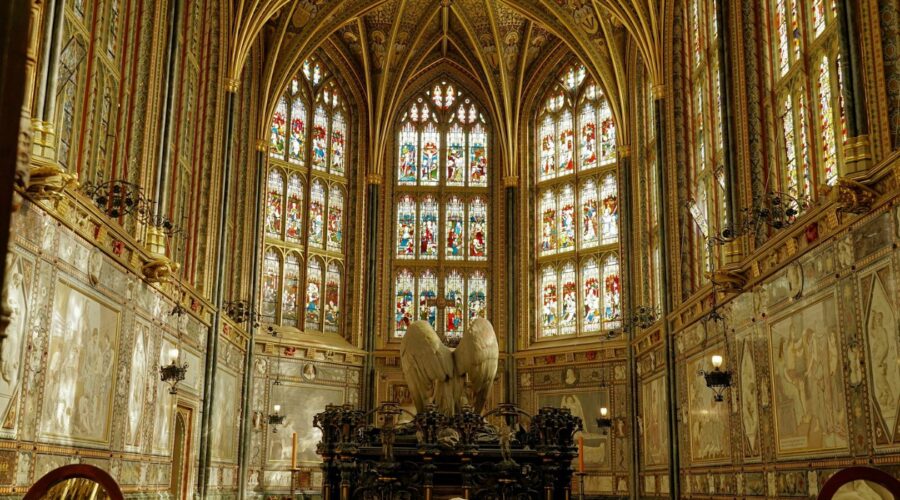
Destination Churches: A Guide to Experience-Driven Worship
“`html
What is a Destination Church?
A destination church is a church that attracts attendees from outside its local community, often from significant distances. Destination churches typically offer unique and unforgettable worship experiences that draw people from far and wide.
Why Attend a Destination Church?
There are several reasons why people might choose to attend a destination church:
- Unique Worship Experiences: Destination churches often invest heavily in creating immersive and engaging worship experiences that are different from typical church services.
- Renowned Speakers: Many destination churches feature guest speakers who are well-known authors, theologians, or pastors from other churches.
- Spiritual Growth: Destination churches often provide opportunities for spiritual growth and personal development through workshops, classes, and retreats.
- Tourism: Some destination churches are located in popular tourist destinations, offering visitors the chance to combine spiritual enrichment with vacation experiences.
How to Find a Destination Church
To find a destination church that suits your needs, consider the following:
- Online Research: Search online for churches in areas you may be interested in visiting.
- Social Media: Follow potential churches on social media to get a glimpse of their worship style and community.
- Word-of-Mouth: Ask friends, family, or your current pastor for recommendations.
Planning Your Visit
Once you have chosen a destination church, plan your visit carefully:
Book Accommodations:
If you will be traveling from out of town, make arrangements for accommodations in advance.
Attend Multiple Services:
If possible, attend multiple services to experience the church’s worship style and community firsthand.
Explore the Area:
If time permits, take advantage of the opportunity to explore the surrounding area and immerse yourself in the local culture.
## Benefits of Attending a Destination Church
Attending a destination church can provide several benefits:
Spiritual Renewal:
The immersive worship experiences and renowned speakers can foster spiritual growth and renewal.
Community Building:
Even for first-time visitors, destination churches offer opportunities to connect with like-minded individuals and build meaningful relationships.
Cultural Enrichment:
Traveling to a destination church can expose you to different cultures and perspectives, fostering a broader worldview.
Memorable Experiences:
The unique and unforgettable worship experiences at destination churches create lasting memories that enrich your faith journey.
Examples of Destination Churches
Here are a few examples of renowned destination churches:
- Elevation Church (Charlotte, NC): Known for its energetic and engaging worship style, inspiring messages, and extensive online presence.
- North Point Ministries (Alpharetta, GA): A multi-site church with a strong emphasis on spiritual growth, community involvement, and leadership development.
- Bethel Church (Redding, CA): A charismatic church known for its vibrant worship music, healing services, and international outreach.
- Hillsong Church (Sydney, Australia): A global megachurch with campuses in major cities around the world, renowned for its contemporary worship and youth ministry.
- Willow Creek Community Church (South Barrington, IL): A large, seeker-sensitive church with a focus on practical Christianity and discipleship.
Conclusion
Destination churches offer unique and spiritually enriching experiences that can attract attendees from far and wide. By carefully planning your visit and choosing a church that resonates with your needs, you can benefit from the spiritual renewal, community building, cultural enrichment, and memorable experiences that these churches provide.
“`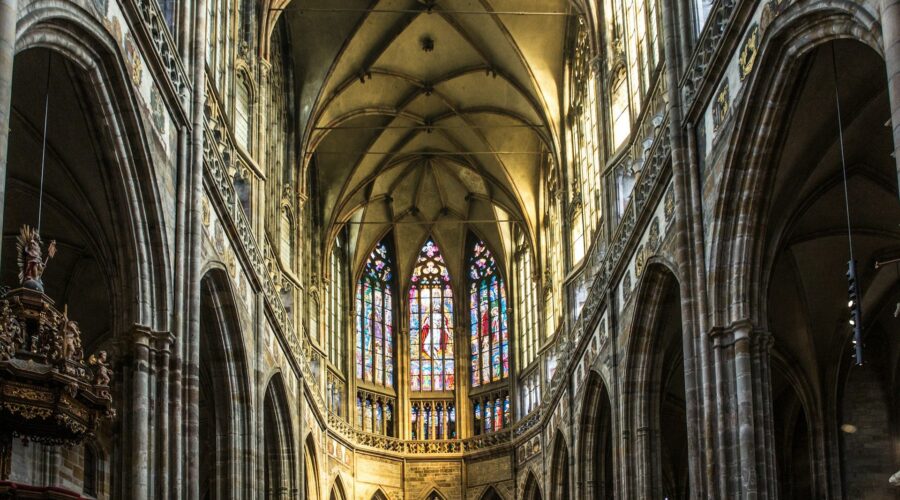
Unveiling the Richness of Orthodox Catholicism
Introduction
Orthodox Catholicism, a vibrant and ancient branch of Christianity, holds a rich tapestry of beliefs, traditions, and practices. With its profound spiritual depth and unwavering commitment to preserving the apostolic faith, it offers a unique path to encounter the divine and cultivate a transformative relationship with God.
Distinctive Beliefs
Core Tenets
- Holy Trinity: Orthodox Catholicism upholds the belief in the Holy Trinity – Father, Son (Jesus Christ), and Holy Spirit – as the one true God.
- Incarnation: Jesus Christ, the Son of God, became human to redeem humanity from sin and reconcile them with the Father.
- Resurrection: Jesus Christ rose from the dead, conquering death and opening the way to eternal life for all who believe.
Seven Holy Sacraments
Orthodox Catholics believe in the seven Holy Sacraments instituted by Christ as channels of grace:
- Baptism
- Confirmation
- Eucharist
- Penance
- Anointing of the Sick
- Holy Orders
- Matrimony
Role of Tradition
Orthodox Catholics place great emphasis on apostolic tradition, the unwritten teachings handed down from the early Church. These traditions complement and interpret Scripture, providing a living and dynamic understanding of the faith.
Liturgical Practices
Divine Liturgy
The central act of worship in Orthodox Catholicism is the Divine Liturgy, a sacramental meal that re-enacts the Last Supper and celebrates the presence of Christ in the Eucharist.
Iconography
Icons, sacred images of Christ, the saints, and biblical scenes, play a significant role in Orthodox worship. They are venerated but not worshipped, serving as a window into the heavenly realm.
Vestments and Rituals
Orthodox priests and bishops wear elaborate vestments during liturgical services, symbolizing their sacred role. Rituals and gestures, such as prostrations and incense burning, enhance the mystical and awe-inspiring nature of worship.
Monasticism and Spirituality
Monastic Tradition
Orthodox monasticism is a long-standing tradition where individuals embrace a life of prayer, obedience, and service to God in monastic communities.
Hesychasm
Hesychasm is an Orthodox spiritual practice that emphasizes inner stillness and the attainment of divine grace through prayer, meditation, and contemplation.
Mystical Dimension
Orthodox Catholicism recognizes the mystical dimension of the faith, where individuals experience a personal encounter with God and a profound transformation of consciousness.
Church Structure and Governance
Autonomous Churches
Orthodox Catholicism is organized into a network of autonomous Churches (also known as Patriarchates or Archbishoprics), each led by a patriarch or archbishop.
Ecumenical Councils
Ecumenical Councils, gatherings of bishops representing the entire Church, are the highest authority in matters of faith and doctrine.
Synods and Councils
Local Synods and Councils govern each autonomous Church and provide spiritual guidance to the faithful.
Historical Development
Origins in the Apostolic Age
Orthodox Catholicism traces its origins to the apostolic period, claiming direct lineage from the apostles of Jesus Christ.
Early Church Fathers
Church Fathers such as Athanasius, Cyril of Alexandria, and John Chrysostom played a pivotal role in defining Orthodox doctrine and spirituality.
Great Schism of 1054
In 1054, the Orthodox Church split from the Western Church, known as the Great Schism. Differences in theological interpretations, liturgical practices, and ecclesiastical authority contributed to this divide.
Conclusion
Orthodox Catholicism is a living and vibrant tradition that embraces the fullness of the Christian faith. Through its distinctive beliefs, rich liturgical practices, monastic spirituality, and historical continuity, it offers a profound path to experience the divine and cultivate a transformative relationship with God. By delving deeper into the Orthodox Catholic world, individuals can discover a treasure trove of spiritual wisdom, beauty, and transformative power.
Additional Resources
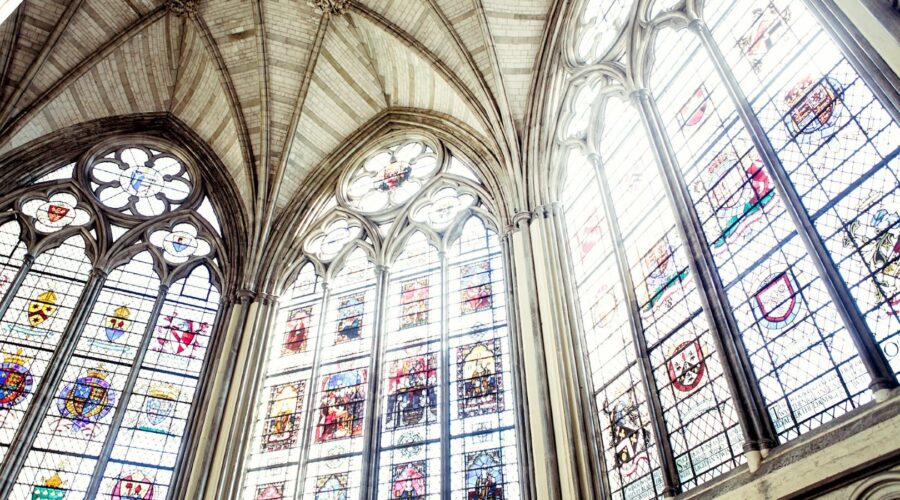
Discover the Heart of Community: Holy Family Parish
Introduction
Families are the foundation of any community, and churches play a vital role in fostering the well-being of families. Holy Family Parish stands as a testament to this mission, providing a welcoming and supportive environment where families can grow, connect, and serve together.
About Holy Family Parish
Established in [Year], Holy Family Parish has been an integral part of the [City] community for over [Number] years. Its mission is to:
- Proclaim the Gospel
- Nourish spiritual growth
- Build a vibrant and welcoming community
- Serve the needs of others
Parish Services
Mass Times
Day Time Sunday 8:00 AM, 10:00 AM, 12:00 PM (Spanish) Monday-Friday 8:00 AM Saturday 5:00 PM Sacraments
Holy Family Parish offers a full range of Catholic sacraments, including:
- Baptism
- Confirmation
- Eucharist
- Penance
- Anointing of the Sick
- Matrimony
Additional Services
In addition to its core services, Holy Family Parish provides a wide range of additional offerings:
- Faith Formation programs for all ages
- Youth ministry programs
- Senior citizen programs
- Food pantry
- Clothing distribution
- Community outreach programs
Community Involvement
Holy Family Parish believes in the importance of being actively involved in the wider community. It partners with local organizations to provide a variety of services, including:
- Tutoring and mentoring programs for underprivileged children
- Meals on Wheels for homebound seniors
- Support for local homeless shelters
- Disaster relief efforts
- Interfaith dialogue and collaboration
Membership and Involvement
Joining Holy Family Parish is a simple and meaningful way to become part of a faith-filled community. To become a member, you can:
- Register online
- Call the parish office at [Phone Number]
- Visit the parish website at [Website Address]
Once you are a member, there are many ways to get involved:
- Attend Mass regularly
- Participate in Faith Formation programs
- Volunteer for community outreach programs
- Serve on parish committees
- Support the parish financially
Conclusion
Holy Family Parish is more than just a church; it is a family of faith. It is a place where people of all ages and backgrounds can find a sense of belonging, support, and purpose. Whether you are seeking spiritual growth, a community to call home, or a way to serve others, Holy Family Parish welcomes you with open arms.
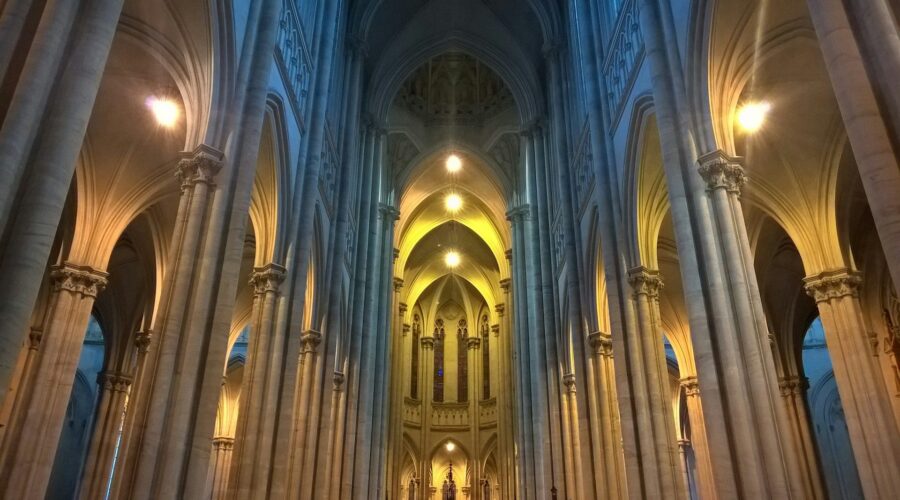
95 Theses: The Spark that Ignited the Protestant Reformation
Introduction
On October 31, 1517, Martin Luther, a German theologian and professor at the University of Wittenberg, published his 95 Theses, challenging the authority of the Catholic Church and its practices. This act is widely regarded as the catalyst that sparked the Protestant Reformation, a major religious movement that resulted in the establishment of Protestantism.
Background
In the 16th century, the Catholic Church held vast temporal and spiritual power. It controlled not only religious matters but also political and social affairs. However, many within the church had become dissatisfied with its practices, particularly the widespread sale of indulgences.
Indulgences were documents that the church sold to believers, claiming they could reduce their time in purgatory after death. Luther argued that indulgences were a form of corruption and that the church had no authority to forgive sins or grant salvation.
The 95 Theses
Luther’s 95 Theses were a list of objections and questions that he posted on a church door in Wittenberg. The theses challenged the authority of the Pope, the doctrine of papal infallibility, and the use of indulgences.
Some of the key theses included:
* “The power of the pope is only declared by human authority.”
* “Purgatory does not exist.”
* “The Bible is the sole authority.”The Reaction
Luther’s 95 Theses spread rapidly throughout Europe, thanks to the newly invented printing press. They sparked a heated debate within the church and eventually led to Luther’s excommunication in 1521.
However, Luther’s ideas resonated with many who were dissatisfied with the Catholic Church. Supporters of Luther organized their own independent churches and adopted his ideas, which became the foundation of Protestantism.
Key Aspects of the Protestant Reformation
Rejection of Papal Authority
Protestants rejected the authority of the Pope as the supreme head of the church and argued that the Bible alone was the ultimate religious authority.
Emphasis on Personal Faith
Protestantism stressed the importance of personal faith and individual conscience in relationship with God.
Salvation by Faith Alone
Protestants believed that salvation was granted by God through faith in Jesus Christ, not through good works or indulgences.
The Priesthood of All Believers
Protestantism held that all believers were priests and had direct access to God without the mediation of a priesthood.
Consequences of the Protestant Reformation
* The division of Western Christianity into Catholicism and Protestantism
* Religious wars and persecution across Europe
* A shift in the political balance of power
* The rise of individualism and the decline of the Catholic Church’s temporal authorityConclusion
Martin Luther’s 95 Theses marked a pivotal moment in religious history. They challenged the authority of the Catholic Church, sparked the Protestant Reformation, and left a lasting impact on Western civilization. The principles of Protestantism, such as personal faith and salvation by grace alone, continue to shape religious beliefs and practices today.
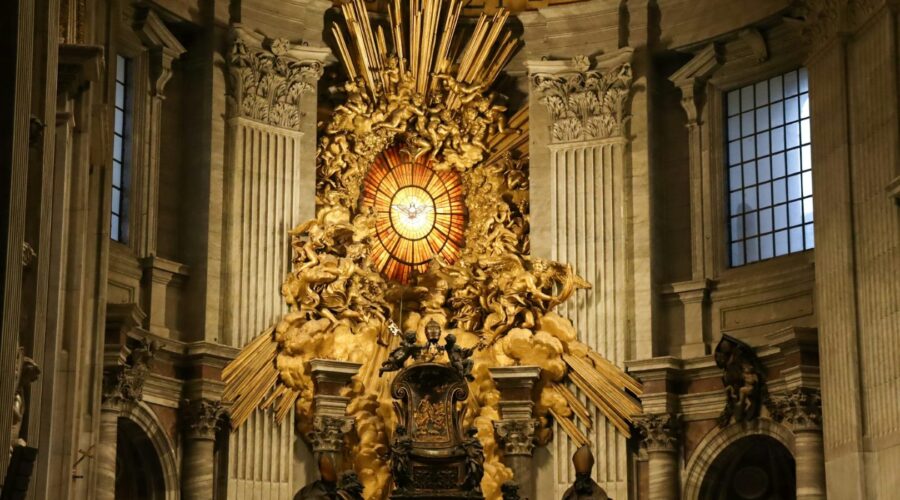
Explore the Rich History and Traditions of the Orthodox Church in America
Introduction
The Orthodox Church in America (OCA) is a self-governing Eastern Orthodox Church that serves over half a million faithful in the United States, Canada, and Mexico. Rooted in the ancient traditions of Christianity, the OCA offers a vibrant and spiritual community for Orthodox Christians seeking a deeper connection to their faith.
History
Origins and Establishment
The origins of the OCA can be traced back to the late 18th century, when Orthodox Christians from Russia and Alaska settled in North America. In 1794, the Russian Orthodox Church established a mission in Kodiak, Alaska, which became the first Orthodox parish in the Americas.
In 1870, the OCA was formally established as the Russian Orthodox Greek Catholic Church in North America. Over the following decades, the OCA expanded rapidly, establishing parishes and dioceses across the United States and Canada.
Autonomy and Self-Governance
In 1970, the OCA gained autocephaly (self-governance) from the Russian Orthodox Church. This granted the OCA the right to elect its own bishops and metropolitans, administer its own affairs, and develop its own liturgical and pastoral practices.
Beliefs and Practices
The Nicene Creed
The OCA adheres to the Nicene Creed, which outlines the fundamental beliefs of Christianity. This creed affirms the belief in one God, the Holy Trinity (Father, Son, and Holy Spirit), and the divine nature of Jesus Christ.
The Seven Sacraments
The OCA recognizes seven sacraments: Baptism, Chrismation, Eucharist, Confession, Marriage, Holy Unction, and Ordination. These sacraments are seen as channels of God’s grace that sanctify and strengthen believers.
Liturgy and Worship
The OCA’s liturgy is based on the Byzantine Rite, which has been celebrated in the Eastern Orthodox Church for centuries. The liturgy is characterized by its rich symbolism, beautiful music, and emphasis on community participation.
Structure and Administration
Primate and Holy Synod
The OCA is led by its primate, the Metropolitan of All America and Canada. The primate is elected by the Holy Synod, a council of bishops that governs the OCA. The Holy Synod is responsible for making major decisions and setting policies for the Church.
Dioceses and Parishes
The OCA is divided into dioceses, each led by a bishop. The dioceses are further divided into parishes, which are local communities of Orthodox Christians. Each parish is led by a priest, who is assisted by a deacon and lay leaders.
Education and Outreach
Seminaries and Institutes
The OCA operates several seminaries and institutes for the training of clergy and lay leaders. The most prominent of these institutions is St. Vladimir’s Orthodox Theological Seminary in Yonkers, New York.
Missionary Work
The OCA actively engages in missionary work, both in North America and beyond. The OCA’s missionary efforts are focused on reaching out to unchurched individuals and establishing new parishes and missions.
Conclusion
The Orthodox Church in America is a vibrant and growing community of Orthodox Christians in North America. With its rich history, profound beliefs, and dynamic worship, the OCA offers a unique and transformative spiritual experience for its members. As the OCA continues to thrive and expand, it remains a beacon of faith and a vital force in the Christian landscape of the Americas.
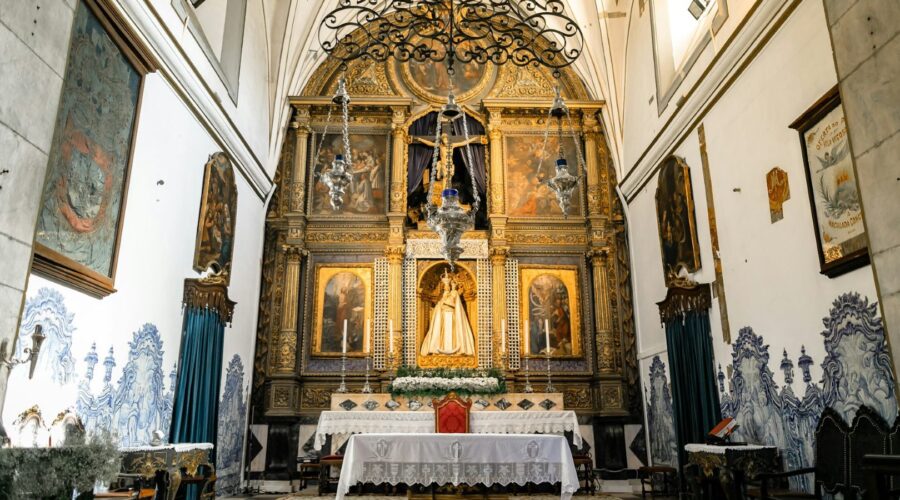
Santa Sophia: The Legacy of an Architectural Marvel
Introduction
Santa Sophia, the architectural masterpiece of the Byzantine Empire, stands as a testament to the ingenuity and artistry of the ancient world. Its towering dome, intricate mosaics, and historical significance make it one of the most awe-inspiring structures in history. This comprehensive guide will delve into the captivating story of Santa Sophia, exploring its architectural significance, historical background, and enduring legacy.
Architectural History
The First Basilica (325-532 AD)
The first iteration of Santa Sophia was a basilica built by Emperor Constantine the Great in 325 AD. This church served as the cathedral of Constantinople for over two centuries, but was unfortunately destroyed during the Nika riots in 532 AD.
The Justinian Era (532-537 AD)
After the Nika riots, Emperor Justinian I commissioned the construction of a new and more magnificent Santa Sophia. Byzantine architects Isidore of Miletus and Anthemius of Tralles designed a revolutionary structure that defied architectural norms.
The Grand Dome
The central feature of Santa Sophia is its colossal dome, one of the largest ever built. Measuring 32 meters in diameter and 55 meters in height, the dome rests on four massive piers and is supported by forty pendentives. The innovative use of pendentives allowed for the creation of a vast, uninterrupted interior space.
Artistic Splendor
Mosaics
The walls and ceilings of Santa Sophia are adorned with exquisite mosaics depicting biblical scenes, historical events, and imperial portraits. These mosaics, created with millions of colored glass tiles, display the exceptional craftsmanship and artistic vision of Byzantine artists.
Marbling and Inlay
In addition to mosaics, Santa Sophia features extensive use of marble and inlay. The interior is adorned with columns, panels, and decorative elements from precious stones such as porphyry, serpentine, and malachite.
Historical Significance
A Center of Christian Worship
For over 900 years, Santa Sophia served as the patriarchate of the Eastern Orthodox Church. It was a sacred space where emperors were crowned, religious ceremonies were held, and theological debates were conducted.
A Mosque and a Museum
In 1453, the Ottoman Empire conquered Constantinople and converted Santa Sophia into a mosque. The building was modified with the addition of minarets and the removal of Christian iconography. It served as an important mosque for the Ottoman Empire for nearly five centuries.
In 1935, Santa Sophia was secularized by the newly founded Turkish Republic and converted into a museum. It remains one of Turkey’s most visited tourist attractions.
Enduring Legacy
Architectural Influence
Santa Sophia’s architectural innovations have had a profound influence on subsequent architecture. The dome, pendentives, and use of mosaics became standard features in Byzantine and later Ottoman architecture.
Cultural Symbol
Santa Sophia is a powerful symbol of the Byzantine Empire and the cultural heritage of Istanbul. Its unique blend of architectural elements and artistic splendor reflects the intersection of Eastern and Western influences that have shaped the city’s history.
Planning Your Visit
Location
Santa Sophia is located in the Sultanahmet district of Istanbul, Turkey.
Hours of Operation
- Summer (April – October): 9:00 AM – 6:00 PM
- Winter (November – March): 9:00 AM – 5:00 PM
Admission Fees
Admission to Santa Sophia is 100 Turkish Lira (approx. $15 USD).
Tips for Visitors
- Purchase tickets online in advance to avoid queues.
- Respect the religious and historical significance of the site.
- Wear comfortable shoes as there is a lot of walking involved.
- Take time to admire the intricate details of the mosaics and architecture.
Conclusion
Santa Sophia stands as a timeless masterpiece that reflects the architectural genius, artistic prowess, and historical significance of the Byzantine Empire. Its legacy continues to inspire and awe visitors from around the world. Whether you are interested in architecture, history, art, or culture, a visit to Santa Sophia is an unforgettable experience that will leave you in awe of its enduring beauty and grandeur.
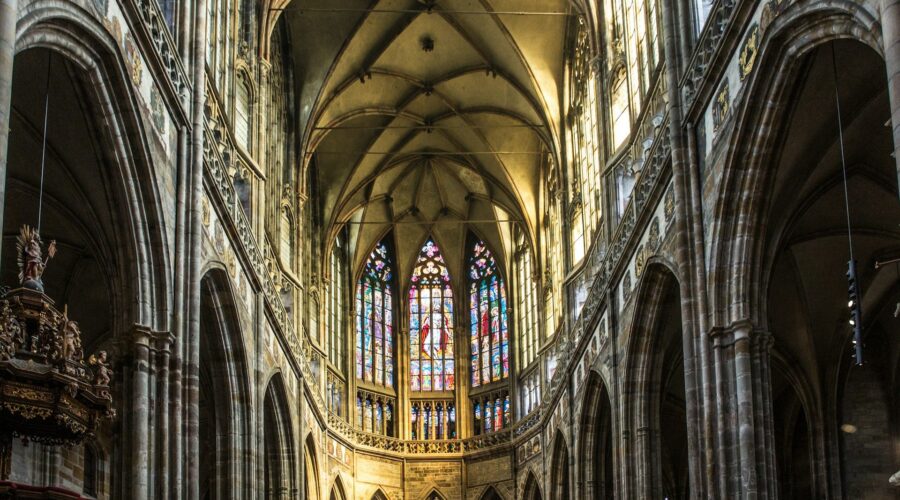
Unveiling the Rich History and Inspiring Mission of Saint Francis Xavier Catholic Church
Introduction
Saint Francis Xavier Catholic Church, nestled amidst the vibrant tapestry of communities in Malabar, Florida, has embarked on a remarkable journey of over six decades, leaving an enduring legacy of faith, service, and spiritual enrichment.
The Genesis: Humble Beginnings
Birth of a Parish
On March 29, 1959, Archbishop Patrick Hurley of the then-Diocese of St. Augustine, recognized the growing need for a Catholic community in the Malabar area. He appointed Father Patrick Cooper as the founding pastor of Saint Francis Xavier Catholic Church.
The fledgling parish initially met in a local school before purchasing a small chapel on Babcock Street in 1962. This modest structure became the cornerstone of a thriving Catholic community, eagerly anticipating the construction of a permanent church.
A Home for the Faithful
In 1968, under the leadership of Father Daniel J. O’Brien, the parish embarked on an ambitious project to build a new church. Architect William Sloan designed the breathtaking edifice, blending traditional and modern elements.
The cornerstone was laid on January 12, 1969, and on December 14, 1969, Archbishop Hurley solemnly dedicated the new Saint Francis Xavier Catholic Church. The church’s striking features include a soaring bell tower, stained glass windows depicting scenes from the life of Saint Francis Xavier, and a spacious sanctuary adorned with intricate artwork.
A Thriving Community
Over the decades, Saint Francis Xavier Catholic Church has flourished into a vibrant and diverse community, welcoming parishioners from all walks of life. The parish offers a wide range of ministries and programs, including:
- Education: Religious education classes for all ages, adult faith formation programs, and Bible study groups
- Worship: Daily Masses, weekend Masses in English and Spanish, and special liturgical celebrations throughout the year
- Service: Outreach programs to the needy, such as a food pantry, clothing drives, and support for local charities
- Fellowship: Social events, community gatherings, and youth groups that foster a strong sense of belonging
Service and Outreach
Inspired by the teachings of Saint Francis Xavier, the patron saint of missions, the parish places a strong emphasis on service and outreach. The Saint Francis Xavier Society of Saint Vincent de Paul provides assistance to the homeless, the elderly, and families in need.
The parish also supports various missionary efforts, both locally and internationally. It partners with organizations such as Catholic Relief Services, Feed the Hungry, and Habitat for Humanity to address poverty, hunger, and homelessness around the world.
Educational Legacy
Saint Francis Xavier Catholic Church recognizes the importance of lifelong learning. The parish established Saint Francis Xavier Catholic School in 1962, which has since become a pillar of Catholic education in the community.
The school provides a rigorous academic curriculum rooted in Catholic values. It fosters intellectual growth, spiritual formation, and a commitment to serving others. Graduates of Saint Francis Xavier Catholic School have gone on to make significant contributions to their communities and the world.
A Place of Pilgrimage and Reverence
The relics of Saint Francis Xavier, brought to the church from Rome in 1970, have made Saint Francis Xavier Catholic Church a destination for pilgrims from near and far. The relics are enshrined in a special chapel, where the faithful can venerate the saint and seek his intercession.
The church also houses a life-sized statue of Saint Francis Xavier, a constant reminder of his missionary zeal and unwavering faith. Visitors are often moved by the beauty of the relics and the inspiring presence of the statue.
Leadership and Stewardship
Saint Francis Xavier Catholic Church has been blessed with a succession of dedicated pastors who have guided the parish with wisdom and compassion. The current pastor, Father Bryan Jenkins, continues the legacy of service and stewardship, leading the parish into a bright future.
The parish relies on the generous support of its parishioners to sustain its ministries and outreach programs. Through stewardship campaigns and fundraising efforts, the community ensures that Saint Francis Xavier Catholic Church remains a beacon of faith and a source of hope for generations to come.
Conclusion
Saint Francis Xavier Catholic Church stands as a testament to the enduring power of faith, community, and service. From its humble beginnings to its present-day vibrancy, the parish has played a vital role in shaping the spiritual and cultural landscape of Malabar. As the community continues to grow and evolve, Saint Francis Xavier Catholic Church remains a steadfast presence, offering a sanctuary of worship, a source of education, and a catalyst for service to all who seek its embrace.
Call to Action
We invite you to visit Saint Francis Xavier Catholic Church, experience our vibrant community, and discover the transformative power of faith. Join us for Mass, participate in our ministries, or simply find solace and inspiration within our sacred walls. Together, we will continue the legacy of Saint Francis Xavier, spreading the Gospel message of love, compassion, and service to all.
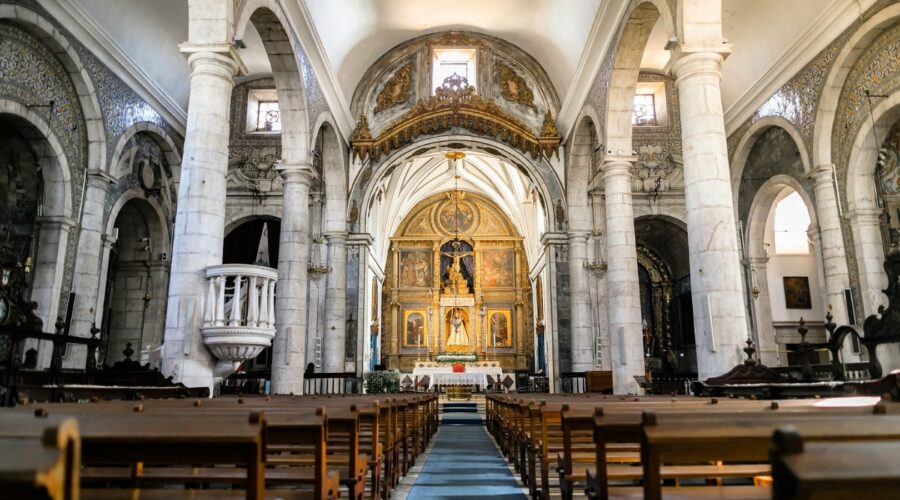
Discover the Church of England: History, Beliefs, and Contemporary Role
Introduction
The Church of England (C of E) is an established church, with its origins in the 6th century. It is the official Christian denomination of England and the mother church of the Anglican Communion, the third-largest Christian communion in the world, with over 85 million members.
History
Early History
The roots of the C of E can be traced back to the Roman Empire, when Christianity spread throughout the British Isles. In 597 AD, Pope Gregory I sent Augustine of Canterbury to convert the Anglo-Saxons to Christianity, marking the official foundation of the English Church.
Medieval Period
During the Middle Ages, the C of E played a significant role in English society. It controlled much of the land and wealth, and its clergy held positions of great power and influence.
Reformation
The 16th century Reformation brought about major changes to the C of E. In 1534, King Henry VIII broke away from the Catholic Church and established the C of E as an independent entity.
Beliefs
Core Beliefs
The C of E shares its foundational beliefs with the wider Christian faith, including:
- The Trinity: God the Father, God the Son (Jesus Christ), and God the Holy Spirit
- The Bible as the inspired word of God
- Sin and the need for salvation
- The death and resurrection of Jesus Christ as the means of salvation
- The Holy Spirit as the source of strength and guidance
Distinctive Features
While sharing core beliefs with other Christian traditions, the C of E has some distinctive features:
- Episcopacy: The C of E is led by bishops, who are ordained and consecrated to oversee dioceses, regions within the church.
- Liturgy: The C of E uses a set of standardized prayers, readings, and rituals for its worship services.
- Broad Church: The C of E embraces a wide range of theological perspectives, allowing for diversity within its membership.
Contemporary Role
Today, the C of E continues to play a significant role in English society:
- Religious Leadership: Provides spiritual guidance and support to its members and the wider community.
- Social Activism: Engages in social justice issues, such as poverty, inequality, and environmental protection.
- Education: Runs numerous schools, colleges, and universities.
- Cultural Heritage: Preserves and promotes England’s cultural and architectural heritage through its historic churches and cathedrals.
Membership
Demographics
As of 2021, the C of E has approximately 26 million baptized members in England. However, regular attendance at church services is lower.
Diversity
The C of E is becoming increasingly diverse, with significant growth in minority ethnic and international congregations.
Challenges and Opportunities
Challenges
- Declining Attendance: Like many other Christian denominations, the C of E is facing a decline in church attendance.
- секулярization: Increasing секулярization in society poses challenges to the church’s mission.
- Internal Divisions: Theological and social debates can lead to internal divisions within the church.
Opportunities
- Digital Outreach: Utilizing digital platforms to reach new audiences and engage with current members.
- Community Engagement: Focusing on the church’s role in serving local communities and addressing social issues.
- Interfaith Dialogue: Building relationships with other faith communities and fostering interfaith understanding.
Conclusion
The Church of England has a rich history, distinctive beliefs, and a contemporary role in English society. While facing challenges, it also has opportunities to continue serving its members and the wider community. By embracing diversity, engaging with secular society, and fostering interfaith dialogue, the C of E can remain a vibrant and relevant force in the 21st century.
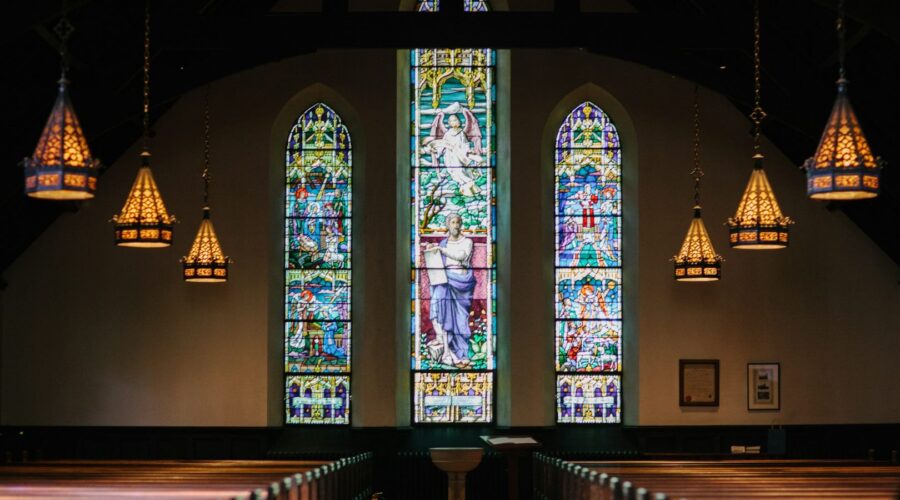
Discover the History and Significance of St. Pius X Catholic Church
St. Pius X Catholic Church, nestled in the heart of Potsdam, New York, stands as a testament to the unwavering faith and dedication of the local Catholic community. Founded in 1954, the church has played a pivotal role in the spiritual lives of countless individuals and families, providing a sanctuary for worship, fellowship, and service.
History of St. Pius X Catholic Church
The seeds of St. Pius X Catholic Church were sown in the mid-20th century as the Potsdam Catholic community outgrew its existing church, St. Mary’s. Recognizing the need for a larger and more modern facility, the parish embarked on a fundraising campaign that culminated in the purchase of a plot of land on the outskirts of town.
Groundbreaking for the new church took place in 1953, and construction progressed rapidly under the leadership of Fr. John F. Reddington, the founding pastor. The church was designed in a traditional Gothic revival style, featuring a towering steeple, stained glass windows, and an expansive nave.
On June 6, 1954, St. Pius X Catholic Church was officially dedicated and became the new home for the Potsdam Catholic community. The church has undergone several renovations and expansions over the years, but it remains a beloved landmark and a source of pride for the parish.
Architecture and Interior
St. Pius X Catholic Church is a striking example of Gothic revival architecture. The exterior is clad in brick and limestone, with intricate carvings and buttresses adorning the facade. The tall steeple, topped by a copper cross, dominates the skyline and can be seen from miles around.
Inside the church, the nave is spacious and well-lit, with high vaulted ceilings supported by ribbed arches. The stained glass windows depict scenes from the life of Christ and the saints, creating a vibrant and inspiring atmosphere.
The sanctuary is located at the east end of the nave and is home to the altar, tabernacle, and ambo. The altar is a focal point of the church, adorned with beautiful carvings and a large crucifix. The tabernacle, which houses the consecrated bread and wine, is located behind the altar and is a symbol of the presence of Christ in the Eucharist.
Parish Life
St. Pius X Catholic Church is a vibrant and active parish, offering a wide range of programs and ministries to meet the needs of its members. These include religious education classes for children and adults, youth programs, Bible studies, and social justice initiatives.
The parish is also home to a number of organizations, including the Knights of Columbus, the Catholic Daughters of the Americas, and the St. Vincent de Paul Society. These organizations provide opportunities for members to come together in fellowship, serve the community, and grow in their faith.
Pastoral Staff
The pastoral staff at St. Pius X Catholic Church is dedicated to providing spiritual guidance and support to the parish community. The pastor, Fr. Patrick S. O’Brien, is responsible for the overall leadership of the parish and its ministries.
Fr. O’Brien is assisted by a team of associate pastors, deacons, and lay ministers who provide a wide range of pastoral care, including counseling, visiting the sick, and preparing individuals for the sacraments.
Mass Times and Sacraments
St. Pius X Catholic Church offers Mass on a regular schedule, providing opportunities for worship and spiritual nourishment for the parish community. Mass times vary depending on the day of the week, and more information can be found on the church’s website.
In addition to Mass, the church also offers the sacraments of Baptism, Confirmation, Eucharist, Reconciliation, and Marriage. These sacraments are essential to the Catholic faith and provide opportunities for individuals to grow in their relationship with Christ and the Church.
Conclusion
St. Pius X Catholic Church is a beacon of faith and community in Potsdam, New York. Its beautiful architecture, vibrant parish life, and dedicated pastoral staff provide a welcoming environment for individuals and families to worship, grow in their faith, and serve the community.
Whether you are a lifelong Catholic or simply seeking a spiritual connection, St. Pius X Catholic Church is a place where you can find a home and experience the transformative power of faith.